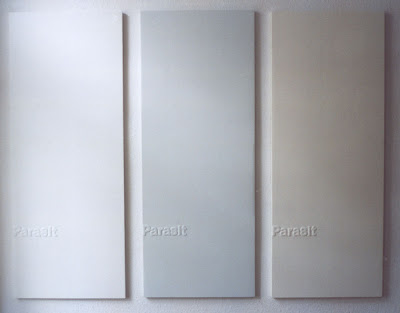The project aims for the almost impossible rather than to maximize the possible; given that art cannot move mountains and land art, in particular, seems almost absurd in a context where the landscape itself is shaped with utmost beauty and splendor. Thus the project intertwines a tragic moment with a comical one. To haul 61 stones uphill will not stop the erosion of the Alps. To try it, nonetheless, turns the attempt at best into a good joke.
To participate in a cumbersome hauling while sweating profoundly equals a ritual purification of sorts in a world that has gone crazy and will not concede to peace at all. It imitates the old Greek figure of a blinded Sisyphus in his futile attempt to roll a boulder uphill that would only roll back down just before reaching the summit--again and again. The Alps will ultimately do the same, and instead of Zeus it will be Gravity who is enforcing the job. Subsequently, it seems slightly bizarre to paint grayish stones gray, scale them, and add numbers to them as if surveying land. As it is delicate to persuade co-hikers to participate in carrying stones manually when anything alike nowadays is done by machines.
"You are doing quite the opposite of what everybody does", was the reaction of a giggling hiker who walked down from the summit. "Everybody schleps stones down, and you are hauling them up."
We give what we have. Our doubts are our passion. Our passion is our purpose. Everything else is the lunacy of art. (Philip Roth)
"Sisyphus on Vacation becomes a communal ritual of giving back to the mountain, but what the mountain never asked for in the first place. The small mound of painted stones stands awkwardly against the towering mountain range as marker of too little and too late. There is something though in the gesture of the self-inflicted trial by the artist and his voluntary collaborators that attests to the power of communal effort and healing. One silent, solitary stone joins another and another until their voices are too loud to ignore. (Aphrodite Désirée Navab)













